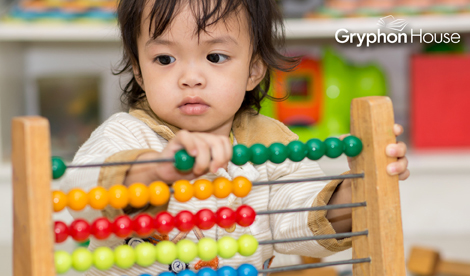
Math is a core component of early learning. Including number sense activities in the classroom is one way teachers are helping form the foundation for your child’s later math learning, which will stay with them the rest of their lives.
Dr. Angela Eckhoff’s book, Creative Investigations in Early Math, is a wonderful parent and teacher resource that explains how common math concepts are used, and the importance of lessons such as teaching number sense to children both at home and in the classroom. Dr. Eckhoff explains, “understanding the concept of number is a complex process for young children,” and that the adoption of national council for teachers of mathematics standards provides the opportunity for teachers to improve the ways in which children come to experience and understand these complex processes.
Under these standards, preschool children are not expected to master math concepts, but the expectations set forth by national council for teachers of mathematics standards are used as a guide for introducing children to mathematics. Most importantly, the primary function of these standards, applied to preschool students, is to offer opportunities for students to understand math concepts now, laying the foundation for an enjoyable math education to come.
Here are some common math expectations for preschoolers introduced to number sense you may encounter with your little learner.
Number and Operations
- Understand numbers, ways of representing numbers, relationships among numbers, and number systems.
- In Pre-K through grade 2 students should:
- Count with understanding and recognize “how many” in sets of objects
- Develop a sense of whole numbers and represent and use them in flexible ways
- Connect number words and numerals to the quantities they represent, using various physical models and representations
- Understand meanings of operations and how they relate to one another.
- In Pre-K through grade 2 all students should:
- understand various meanings of addition and subtraction of whole numbers and the relationship between the two operations
- understand the effects of adding and subtracting whole numbers
One-to-One Correspondence and Cardinality
Children must be able to pair one number word with each object to be counted. The principle of one-to-one correspondence holds that each item must be counted once and only once. Prior to having an understanding of one-to-one correspondence, young children will rely on their visual perception to estimate number.
One-to-one correspondence is necessary to develop a sense of cardinality, which is the understanding that when counting a group of items the number word applied to the last object represents the total amount of the group.
Author(s)Angela Eckhoff, PhD
Jenna Roby
A graduate of High Point University, Jenna Roby served as marketing specialist for Gryphon House from 2013-2015.